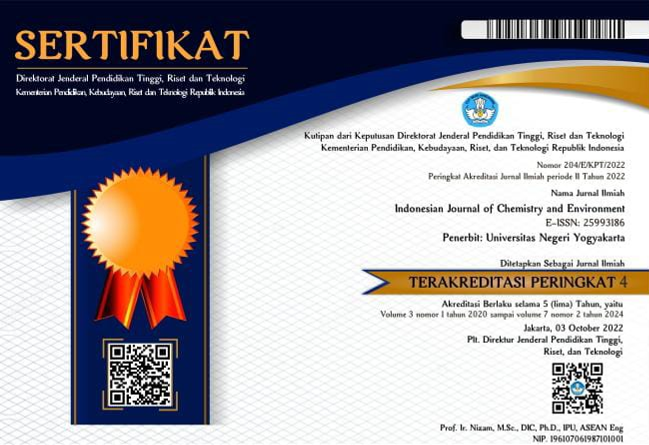Strategies For Handling Plastic Bottle Waste In Gorontalo City Through The Utilization Of Asphalt Concrete Wearing Course (AC-WC) Additives
DOI:
https://doi.org/10.21831/ijoce.v7i1.67871Abstract
The amount of plastic waste, especially disposable plastic bottle waste (PET), needs to be utilized. plastic bottle waste is a flexible material that can be used as an alternative additive to the pavement mixture so as to reduce the production of PET disposable bottle waste. So this research needs to be done to find out its utilization. The purpose of this research is to analyze Polyethylen Terephtalate (PET) plastic bottle waste can be used as an additive and analyze the amount of Polyethylen Terephtalate (PET) bottles needed for Asphalt Concrete Wearing Course (AC-WC) pavement mixtures. The method used is an experimental method carried out in two stages. The first stage of Marshall testing without using plastic to find the Optimum Asphalt Content (KAO) with variations of 4%, 4.5%, 5%, 5.5%, 6%, 6.5%. The second stage of Marshall testing using the optimum asphalt content (KAO) obtained from stage one with additional variations of Polyethylen Terephtalate (PET) plastic bottle waste 1%, 2%, 3%, 4%, 5% to get the optimum PET content. The results of stage one Marshall testing obtained an optimum asphalt content of 5.675%, while Marshall in the second stage obtained an optimum PET content of 0.45% equivalent to 0, 0026 gr and all types of Marshall parameters met the Bina Marga 2018 revision 2 specifications for mixing Asphalt Concrete Wearning Course (AC-WC). Each production of one ton of Asphalt Concrete Wearning Course (AC-WC) requires 204.3 bottles of Polyethylen Terephtalate (PET) plastic.
Downloads
Published
How to Cite
Issue
Section
Citation Check
License
Authors who publish with this journal agree to the following terms:
- Authors retain copyright under a Creative Commons Attribution–ShareAlike License (CC BY SA) that allows others to share: copy, and redistribute the material in any medium or format, Adapt: remix, transform, and build upon the material, for any purpose, even commercially.
- Authors are able to enter into separate, additional contractual arrangements for the non-exclusive distribution of the journal's published version of the work (e.g., post it to an institutional repository or publish it in a book), with an acknowledgement of its initial publication in this journal.
- Authors are permitted and encouraged to post their work online (e.g., in institutional repositories or on their website) prior to and during the submission process, as it can lead to productive exchanges, as well as earlier and greater citation of published work.










